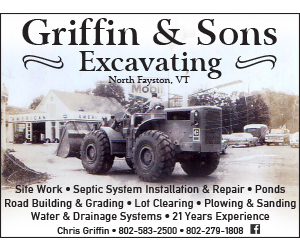Waitsfield’s Covered Bridge gets damaged with unfortunate regularity and then it gets repaired. But it’s not often that the bridge gets repaired with the attention to detail, history and hand-hewn timbers being used by the bridgewrights at Vermont Heavy Timber who are working on the bridge this week.
The bridge was damaged by a truck strike in November. This week Miles Jenness, owner and founder of Vermont Heavy Timber in Huntington started their repairs – weather dependent -- with the bridge closed while they are there.
Jenness and his crew work in accordance with historic restoration/preservation standards published by the U.S. Department of the Interior. That means their work creates ‘readable repairs or repairs that allow historians to determine what work has been done decades and perhaps centuries from now.
READ THE TIMBERS
“We look for clues, read the timbers and joinery, to understand how structures were built and we leave clues behind so that what we’ve done is understandable and can be recreated if needed,” Jenness said.
For one thing, that meant taking the damaged member of the Waitsfield Covered Bridge back to their shop and using it to guide their work in hand-hewing a new member from a properly-sized log using equipment akin to what would have been used when that member was first created and installed.
“We want to make readable repairs, so that future historians can look back and see what we’ve done. We never use old beams or take them out of barns. That would confuse the historians of the future,” he added.
Jenness offered a quick tour through some of the timbers inside the bridge, noting which ones were cut using modern equipment and explaining how some were older and cut with period tools, including a sash saw which has timbers moved through a sash or opening while the saw blade moves up and down.
REBUILDING NOTRE DAME
That facet alone is fascinating. But for Jenness and others like him who work in this type of restoration/remediation work, it’s the art of recreating and rebuilding in the language and with the tools or vernacular of the time that is compelling and challenging.
While working on a project in Maine, Jenness met Loic Desmont, a French restorationist and became friends. Desmont was working for Charpentier Sans Frontiers, a French nonprofit that does restoration work by hand around the world, keeping up the traditional ways of working.
When the Maine project was done, Jenness invited Desmont to visit and stay with his family. They stayed in touch and four years ago Desmont called and said he had a really cool project and invited Jenness to come work on the rebuilding of Notre Dame. The roof space and other parts of the historic Paris cathedral were damaged during a structural fire on April 15, 2019.
FROM THE 1200s
Jenness said yes and in August returned from eight months of working on the oldest section of the cathedral, built in the 1200s. Their work involved reading the clues and recreating the burned pieces using tools of the time. For help reading the clues they relied on medieval drawing and paintings, even tapestries that showed carpenters hewing timbers.
“All the axes that we used to heal up the material from Notre Dame were based on these many drawings and depictions of the original carpenters,” he said.
“There are many different ways to learn to do this work. It’s on the job training but despite what people think, these are not lost trades. They’re diminished from what they once were because of not being regularly practiced. But they exist and so does the documentation for us to create them,” he said.
“So, sure, it was a little gooey, using these drawings that were made of carpenters working on Notre Dame in the 1200s but we were able to look at those and say, ‘here’s the shape of the axe’ and we can look at the axe marks and see a long scallop. We knew that Germanic axes had a very flat face and created a very straight edge while French axes near the Loire, had a curved edge. We could see on the original timbers that there were not flat edges so we knew what tools to use,” he explained.
There were 11 historical preservationists from the United States working on Notre Dame and nine of them were from Vermont, Jenness said.
ARTISANAL AND ART
He said while it was thrilling, and an honor to work on such an historic structure that is so important to French culture, history and heritage, the real thrill for him came not from the edifice, but the craft.
“The cathedral is the embodiment of the craft. As soon as it burned there was a lot of talk about how this craft no longer exists and the trees are no longer there and there are no timber framers. There was talk about building it with concrete or holding some design challenge to build it a different way. That is something we face all the time,” Jenness explained.
“I see this work as something that shows that this hand work, this craft still exists. It’s craftsmanship. It’s artisanal and it’s art. It’s all those things, so to be part of that is a lot more significant to me than the church, which is a beautiful building, but our work demonstrated that this work exists, it is thriving, and it is not forgotten,” he said.
TRUE RESTORATION WORK
He said he is just as thrilled with projects like the Waitsfield Covered Bridge and others in Vermont and New England.
“Notre Dame was a really amazing project but there are other projects, some really interesting rebuilds where we have to do a lot of figuring out of the clues to determine what was originally done. That type of true restoration work is much more difficult and more interesting to me,” he added.
Jenness has a crew of six and they work all over. He has been doing this for 18 years and his business is 10 years old.
“We are extremely busy. Unfortunately, there aren’t more people doing this work. Vermont bridges suffer from the lack of people doing this,” he said.














